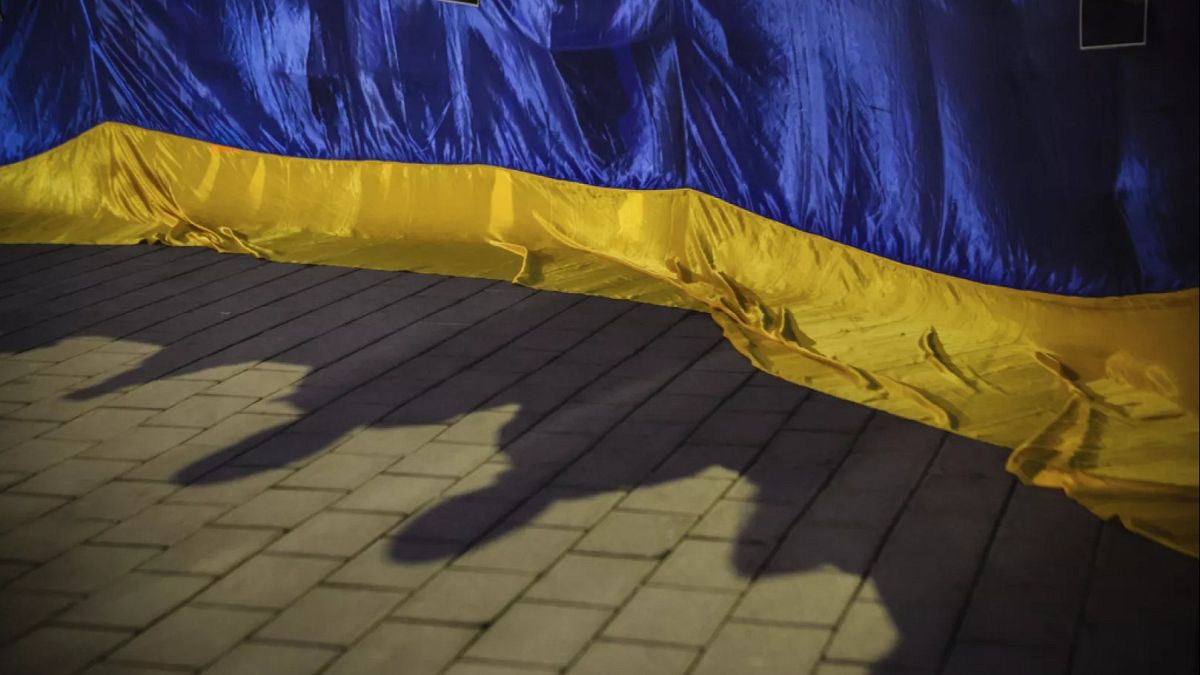More than three years after fleeing Russia’s full-scale invasion of Ukraine, tens of thousands of Ukrainian refugees in France are facing a new kind of uncertainty: tightening budgets and waning political support.
While countries like Germany and Poland continue to welcome the bulk of those fleeing the conflict, France hosts just 55,000 Ukrainians under the EU’s “temporary protection” status, compared to 1.18 million in Germany alone.
Since March 2022, temporary protection status has allowed Ukrainians to bypass the traditional asylum process and quickly access rights such as work permits, health care, school for children, and a modest asylum seeker allowance of up to €426 a month in France.
The scheme in France, which was set to end in March 2025, was finally extended until March 2026 due to the ongoing conflict.
But as the war drags on and economic pressures mount, the French government is finding it more and more challenging to continue supporting Ukrainian refugees.
‘We’ve reached the end of a system’
One of the main issues is housing. In the immediate aftermath of Russia’s full-scale invasion, the French state mobilised more than 19,500 spots in emergency shelters for Ukrainians. But according to the NGO La Cimade, those numbers have since dwindled, falling to to 13,000 spots in 2023, 9,000 in 2024 and 4,000 in 2025.
The state also rolled out rental intermediation schemes known as ILM, allowing organisations and NGOs to sublet private apartments to vulnerable Ukrainian families. Approximately 30,000 homes were made available, but now this system is also faltering.
According to a government bulletin sent by French Prime Minister François Bayrou in December 2024, only 11,000 ILM spots will be financed in 2025, far short of the number needed.
The other issue is that while the organisations who provide the apartments to refugees first need to put up cash to sublet them, their own budgets are being pushed to the brink.
Nadia Sollogoub, centrist senator and president of the Senate’s France-Ukraine friendship group, has watched this unravel in real-time.
“In 2023 and 2024, these associations advanced the costs of the housing, but as the state was in financial difficultiy, so they were only reimbursed on 30 December each year, and not the full amount,” she told Euronews.
“I fear that some organisations will stop taking care of the Ukrainians because of this. The fact that the state takes a long time to pay them back puts them in great financial struggle and cash flow problems.”
With funding drying up, aid groups in France fear a crisis.
“The refugees are very worried because support has run out of steam, and we’re in a major financial crisis in France, so they don’t really know what’s going to happen. It used to be very controlled, but now we’ve really reached the end of the system,” said Sollogoub.
Some Ukrainian families are now living with the fear of losing their accommodation. In autumn 2024, associations sounded the alarm after several families in the east of France received expulsion notices from ILM housing.
Thanks to media coverage and advocacy, they were allowed to stay, but the precedent was deeply unsettling, according to Violeta Moskalu, who heads a French-Ukrainian association in the region.
Temporary protection or asylum?
What’s more, the framework of the temporary protection scheme is being tested. French authorities have been pushing Ukrainian refugees to apply for asylum.
Refugees under the temporary scheme are ineligible for certain types of social aid, such as the RSA (active solidarity income) or aid for the disabled. And the longer the war continues, the more temporary protection begins to resemble a permanent limbo.
Senator Nadia Sollogoub is pushing for change. “I’ve tabled a bill to be examined by the Senate on May 14,” she said.
“It would allow those who remain under temporary protection and the IML scheme to have the same social rights as if they had been granted asylum… except that they will be able to return home.”
She’s critical of the government’s mixed messaging: “At the national level, the government continues to say, ‘Here we are, with our hands on our hearts, our Ukrainian brothers whom we welcome with all our generosity,’ except when it came the time to decide the 2025 budget, we didn’t get the funds to house them.”
Since January 2022, France has spent €4.32 billion on welcoming Ukrainian refugees, according to Statista.
In February, the Parliament adopted a long-overdue and contentious budget plan for 2025, which aims to cut an eye-watering €30 billion and raise taxes by €20 billion to limit France’s deficit to 5.4% of GDP this year.
As state-funded support schemes struggle, more Ukrainians are applying for asylum.
In 2024, France received more than 11,800 first-time asylum applications from Ukrainians — four times as many as the previous year, making Ukraine the second-largest country of origin for asylum seekers, after Afghanistan. But this comes with its own complications.
“Our government services are already overwhelmed by asylum applications,” Sollogoub told Euronews. “It takes quite a long time to get these documents. What’s more, we’re not doing what we wanted to do in the first place.”
The initial goal, she emphasised, was to create a pathway for Ukrainians to return home when the war ends, not to force them into long-term asylum.
Unlike temporary protection, refugee status prevents the status holder from returning to their home country.
At the same time, Ukrainians’ intentions to return to their country have dropped considerably over time from 52% in 2023 to 31% in 2024, according to the EU Agency for Asylum.
Although France isn’t directly slashing support for Ukrainian refugees, it’s a glimpse of a wider shift across the continent, where support for Ukrainian refugees is being steadily scaled back.
In December 2024, the Swiss parliament restricted temporary protection to those from attacked or occupied areas in Ukraine. Germany and Estonia have also curtailed aid and access to services for Ukrainians.
Read the full article here


